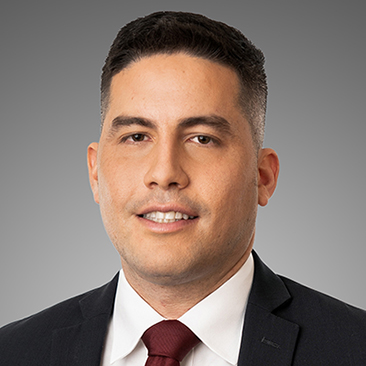In January 2020, we analyzed a split among the Circuit Courts regarding whether a non-debtor holding a debtor’s property on the petition date has an affirmative obligation under section 362(a)(3) of the Bankruptcy Code to return that property to the debtor immediately following the filing of the bankruptcy petition. Automatically upon a debtor’s filing its bankruptcy petition, section 362(a)(3) stays “any act to obtain possession of property of the estate or of property from the estate or to exercise control over property of the estate.” As discussed in our 2020 article, various Circuit Courts have wrestled with whether the words “exercise control over property of the estate” encompass a non-debtor’s retention of property in its possession at the beginning of the debtor’s bankruptcy case. If the answer to this question is “yes,” then a debtor need not take any action to bring estate property into its possession and can file a motion to enforce the automatic stay if a party does not promptly return the estate property. If the answer is “no,” however, then a debtor will need to employ other means to compel the return of its property.
Last week, in City of Chicago, Illinois v. Fulton, the Supreme Court answered this question by ruling that section 362(a)(3) does not require a non-debtor to return to the debtor property in the non-debtor’s possession. Citing the text and statutory history of sections 362(a)(3) and 5421 of the Bankruptcy Code, the Court reversed the Court of Appeals for the Seventh Circuit on the grounds that the circuit court incorrectly concluded that the City of Chicago violated section 362(a)(3) when it refused to return several individual debtors’ vehicles that it had impounded before the filing of their bankruptcy petitions due to the debtors’ failures to pay fines. The Court instead held that section 542 of the Bankruptcy Code governs turning over a debtor’s property and is the provision through which a debtor should seek such return of its property from a non-debtor.
As discussed further below, the main impact of the Court’s decision is likely to make it more time-consuming and expensive for a debtor to compel the return of its property. Thus, the impact is likely procedural rather than substantive. And as also discussed below, the Court left open many important related issues.
Supreme Court’s Analysis
Writing for the Court, Justice Samuel Alito first examined the text of section 362(a)(3) to conclude that the most natural reading of “stay,” “act,” and “exercise control” is that section 362(a)(3) imposes a negative injunction against acts that would disturb the status quo as of the petition date, rather than a mandatory injunction that creates an affirmative obligation to return property. Justice Alito reasoned that “control” means “to have power over,” so an “act” to “exercise” power over property requires more than passive retention of the property. The Court also concluded that an amendment to the Bankruptcy Code in 1984 extending the automatic stay from “any act to obtain possession” to “any act to obtain possession . . . or to exercise control over property of the estate,” was intended only to extend the negative injunction to acts that would change the status quo with respect to intangible property—for example, the termination of a lease—and acts that would not involve taking possession but would change the status quo with respect to tangible property—for example, the sale of vehicles impounded prepetition. Accordingly, the Court held that a non-debtor’s mere retention of property after the petition date is not an act to exercise control over property of the estate in violation of section 362(a)(3).
Justice Alito found further support for this view by comparing section 362(a)(3) to section 542 of the Bankruptcy Code. First, the Court noted that section 542, which describes the range of property that an entity “shall deliver to the trustee,” would be superfluous if section 362(a)(3) already requires an entity to turn over estate property upon the filing of the bankruptcy petition. The Court rejected the debtor’s argument that section 362(a)(3) would not obviate section 542 because section 542(a) specifies the party to whom the non-debtor must return the property and requires the non-debtor to account for the property, while section 362(a)(3) is silent on those subjects. In doing so, the Court noted how unlikely it is that Congress intended section 362(a)(3), which does not even mention turnover, to be the main Bankruptcy Code section governing turnover while effectively reducing section 542, the entire subject of which is turnover, to a minor provision that merely specifies to whom the property must be delivered and that the debtor is entitled to an accounting.
Second, the Court observed that sections 362(a)(3) and 542 would conflict with each other if section 362(a)(3) required a party to turn over property. While section 542 generally requires a party to turn over property to the estate, it includes exceptions to the turnover obligation. To the contrary, section 362(a)(3) contains no such exceptions. As a result, if section 362(a)(3) governed turnover of estate property, it would require a non-debtor to turn over property that the non-debtor would not have to turn over under section 542. The Court found no textual basis for reading section 542(a)’s exceptions into section 362(a)(3) or any indication that Congress intended to make section 362(a)(3) an enforcement arm of section 542.
In short, after examining the text and history of sections 362(a)(3) and 542, the Court unanimously held that section 362(a)(3) does not require a non-debtor to return to a debtor property in the non-debtor’s possession on the petition date. But as Justice Sonia Sotomayor discusses in her concurring opinion, the Court’s decision leaves open many questions, the answers to which will affect the impact of the decision.
Justice Sotomayor’s Concurrence
Justice Sotomayor reluctantly agreed with Justice Alito’s analysis that section 362(a)(3) does not impose an affirmative turnover obligation of property in a non-debtor’s possession on the petition date, although she found that the determination conflicts with the Bankruptcy Code’s policy of providing a fresh start to debtors. In particular, she observed that denying or delaying access by individual debtors to their cars significantly diminishes the debtors’ abilities to get to work and rehabilitate their finances.
Justice Sotomayor then discussed the many issues that the Court left open. She first noted that the Court did not address whether a non-debtor’s retention of property might violate a provision of section 362 other than section 362(a)(3). One of the debtors in Fulton asserted to lower courts that Chicago’s refusal to return its vehicle also violated sections 362(a)(4) and 362(a)(6) of the Bankruptcy Code.2 The Court, however, expressly declined to consider these arguments because the lower appellate court did not reach them. But Justice Sotomayor observed that Chicago may have violated sections 362(a)(4) and 362(a)(6).
Justice Sotomayor also noted that the Court did not resolve how or when a trustee should deliver property under section 542. She noted that the practical effect of the Court’s holding is not to deny the debtor its right to recover its property, but likely to increase the length and cost of any litigation because pursuant to Bankruptcy Rule 7001, an action under section 542 must be initiated by an adversary proceeding, which typically takes longer, and costs more, to resolve than a motion seeking to enforce section 362(a). Justice Sotomayor then discussed specific approaches that bankruptcy courts have employed to address timing issues in enforcing turnover under section 542: (1) at least one bankruptcy court has held that section 542 imposes an automatic requirement that a non-debtor immediately return to the debtor all of the debtor’s property; (2) other bankruptcy courts have allowed debtors to seek turnover under section 542 via motion rather than an adversary proceeding; and (3) still, other bankruptcy courts have expedited proceedings or entered preliminary injunctions in adversary proceedings that debtors commenced under section 542. While Justice Sotomayor acknowledged the need for bankruptcy courts to use these techniques to render section 542 useful to debtors in practice, she also asserted that Congress or the drafters of the Federal Rules of Bankruptcy Procedure should modify the statute and applicable bankruptcy rules to shorten how long it takes a debtor to compel turnover under section 542. Finally, in a footnote, Justice Sotomayor observed that the Court did not address what a non-debtor may do with a debtor’s property in the non-debtor’s possession. In doing so, she cited a quote from a lower court decision to the effect that improperly selling a debtor’s property violates section 362.
Conclusions and Takeaways
In Fulton, the Supreme Court provided further guidance as to the rights of non-debtors and debtors with respect to property in non-debtors’ possession on the petition date. While Fulton does not disturb a debtor’s right to recover estate property, its practical effect may be to limit the path to recovery to an adversary proceeding under section 542, which typically takes longer and costs more than a stay-enforcement motion. In addition, the burden of showing whether an interest secured by estate property is adequately protected may now fall on debtors seeking to recover estate property. Practitioners facing this issue should assess their clients’ options by familiarizing themselves with applicable case law (including any future cases addressing the remaining open issues) and Bankruptcy Rules, as well as any applicable local or chambers rules of procedure. Finally, Fulton is another example of the Supreme Court hewing closely to the text of the Bankruptcy Code notwithstanding conflicting public policy interests.3 Where there are disputes over the meaning of Bankruptcy Code provisions, practitioners are reminded that text and statutory structure may well carry the day, especially in the Supreme Court.
Contributor(s)












